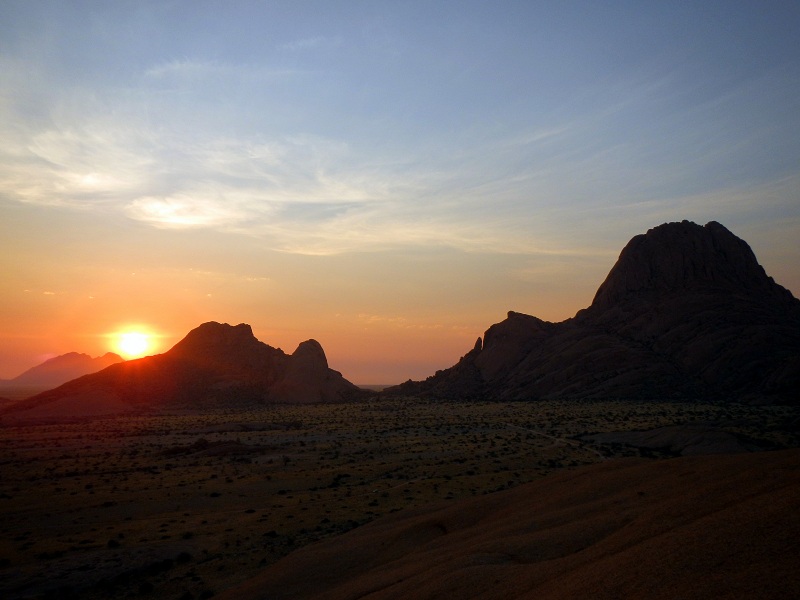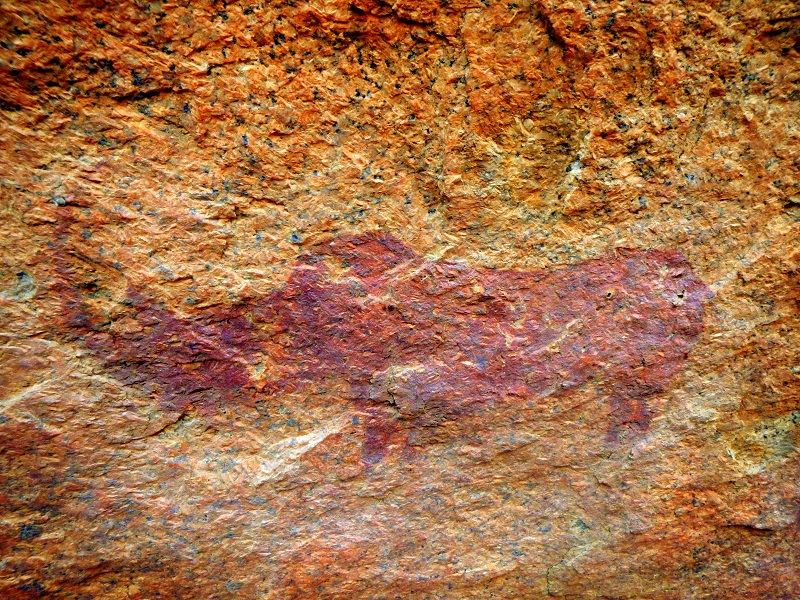[dropcap custom_class=”normal”]Africa has a wealth of safari and wildlife holiday opportunities for those seeking to experience nature and wildlife at its peak. Whether you go deep bush in Etosha National Park or follow the big cats in the Maasai Mara, a trip into the wilderness will touch your hearts and souls. These top destinations are redefining the African safari, start planning your safari holiday now. [/dropcap]Continue reading
Interesting Facts About Namibia
[dropcap custom_class=”normal”]Namibia nicknamed the Land of the Brave is situated on the southwestern coast of Africa and bordered on the north by Angola and Zambia, on the east by Botswana, and on the east and south by South Africa. It is a country popular for its desert, sand dumes and safaris. Namibia is a tourist destination that you don’t necessarily need a visa to visit as far as you don’t stay beyond 90 days. For more information contact a Namibian Embassy nearest to you.[/dropcap]Continue reading
Small Bushman-Paradise | Namibia Rock-Art
Leaving the German town of Swakopmund, travel inland towards the Damaraland region of Namibia once inhabited by the ancient bushman. It is here where you’ll score an awesome look into the art of the ancient civilizations (Thelifescape.com, 2014). Small Bushman-Paradise | Namibia Rock-Art
These paintings found at “Bushman’s Paradise” date back thousands of years but are still visible on the peculiar rock formations of this region. The rock formations peak around 1800 meters above sea level creating impressive backdrops and awesome day climbing opportunities!

Don’t forget to keep an eye open for scorpions and spiders the size of small dogs.

Where to Stay? Damaraland Bush Camp
What Makes this Camp Site Awesome? Everything! From the fact that all the proceeds from your camping fees go directly to the township of Damaraland to the fact that you will see the most incredible sunset to the fact that you have the ability to admire some ancient artwork of early Africans. I mean who would mind a LUXURY bush toilet when you are in one of the world’s most breath-taking backdrops. The only thing we I was not a fan of was the MASSIVE desert spiders. Blah!

Small Bushman-Paradise | Namibia Rock-Art
Namibia Rock Art
It is said that pictures, designs or images painted or engraved on the rock surfaces are generally referred to as “rock art”. These paintings are generally found on the walls of rock shelters (caves, etc.) which are formed in cliffs in the mountains. The engravings are also found on the large boulders and open surfaces of rocks lying lower on hillsides. The images and ideas that were used by the ancient artists can differ from site to site (Nick Nolte, 2005).

History
In Southern Africa and particularly in Namibia the artists were mainly San (Bushmen) people. The age of rock engravings has been established to be from 2 000 to 6 000 years old while some painted pieces have been dated up to 27 000 years old. One of the most famous rock engravings site in Namibia is Twyfelfontein (“Doubtful fountain”) in Damaraland where more than 2 500 images have been recorded as well as several paintings.
The engravings were first recorded in 1921 by R. Maack in the report written for the SWA Administration but the first detailed study of the site was conducted by Albert Viereck. The name was given to this place by David Levin, a sheep farmer, who moved there in 1947. There is a shelter where paintings of human figures can be seen. More interesting is the fact that both forms of rock art (engravings and paintings) can be found in Namibia unlike South Africa where they are mostly geographically separated with an exception of Northern Cape.
There is an opinion that old people used the engravings to teach there children about the animals and the strange circular images found at Twyfelfontein was used like a map to indicate water sources in the area. Twyfelfontein was proclaimed a national monument in 1952.
There is no certainty on the reasons why the rock art was made. Some experts believe that it were the pictured reminders of some events. Another purpose was representation of religious believes, ceremonies or even a trance experiences. It could also be a way of communication.
How long will it be with us? No doubt that the exposure to the elements is causing damage. Engravings become eroded and paintings fade. But the major threats to the rock art are humans. The best way of protection of the rock art is by not touching it at all. It is highly damaging to spray any liquid on the paintings and engravings.
Article (Small bushman paradise) by The landscape.
Article (Namibia rock art) by Nick Nolte
Sources: Thelandscape.com & nicknoltesafaris.com





